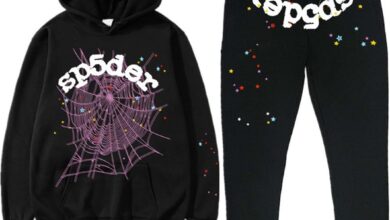How to Design Your Own Custom T-Shirts: Tips and Tools for Success

Custom t-shirts have become more than just a trend; they’ve turned into a way for people to express their personalities, celebrate important events, and promote businesses. Whether you’re creating t-shirts for a special event, launching a clothing brand, or just designing for fun, the process can be both creative and rewarding. However, with so many methods and tools available, it can be overwhelming for beginners to know where to start. This guide will walk you through the essential tips and tools for designing your own custom t-shirts, giving you everything you need to create something truly unique.
Why Design Your Own Custom T-Shirts?
The appeal of designing custom t-shirts is simple: it allows for complete creative freedom. Whether it’s for a personal project, a business venture, or a special event like a wedding or reunion, custom t-shirts provide a way to commemorate the moment. For entrepreneurs, this is an excellent opportunity to build a brand and express your creativity. The t-shirt printing industry has grown exponentially, providing an accessible way for anyone with a good idea to enter the market.
Creating your own designs can also be financially rewarding. By selling custom t-shirts, you have the opportunity to tap into a large consumer market. Personalized items are always in demand, whether people are looking for a unique gift or a way to stand out from the crowd.
Understanding Different T-Shirt Printing Methods
Before you begin designing, it’s important to understand the different printing methods available. Each method has its pros and cons, and the one you choose will largely depend on your design, the quantity you plan to print, and your budget.
Screen Printing is one of the most popular methods for bulk printing. It’s ideal for simple designs with a limited number of colors. However, it can be expensive for small orders due to the setup cost. If you’re planning on printing large quantities of t-shirts with the same design, screen printing is a great option.
For designs that require more detail or intricate patterns, Direct-to-Garment (DTG) printing offers a great solution. This method prints designs directly onto fabric using inkjet technology, allowing for full-color designs with photographic quality. It’s perfect for smaller runs since there’s no setup fee, but it may not be as cost-effective as screen printing for large volumes.
Another growing method is DTF print (direct-to-film printing), which has gained popularity for its versatility. DTF printing allows for vibrant colors and fine details, similar to DTG, but it’s suitable for a wider range of fabrics. It’s a great option if you’re printing on different materials and want to achieve high-quality results with intricate designs.
Heat Transfer printing is a method where your design is printed onto a special transfer paper and then transferred onto the t-shirt using heat and pressure. This method is ideal for small batches and DIY projects, as it’s relatively affordable and simple to execute at home.
Vinyl Printing is great for bold designs with solid colors. Vinyl cuts designs out of colored sheets of vinyl and applies them to the shirt with heat. It’s a durable method, often used for sports jerseys or designs that need to withstand wear and tear.
Essential Design Tips for Custom T-Shirts
When designing a custom t-shirt, it’s essential to keep a few key design principles in mind. Here are some tips to ensure your design is not only visually appealing but also effective:
Keep it Simple: The most successful t-shirt designs are often the simplest. While intricate designs can be eye-catching, they might not translate well onto fabric. Focus on clarity and balance. The simpler the design, the easier it is to make it pop on the fabric.
Use Bold Colors: Choose bold colors that will make your design stand out. When designing, think about the color of the t-shirt you’re printing on. For example, if you’re using a dark shirt, bright colors will stand out better. Conversely, if you’re printing on a lighter shirt, dark colors will create more contrast.
Consider Placement: Placement is crucial when it comes to t-shirt designs. Common positions include the chest, back, and sleeves, but it’s important to consider how the design fits the t-shirt itself. A design in the center of the chest is common, but don’t be afraid to experiment with asymmetrical designs or placements on the sleeve or lower hem.
Target Your Audience: Tailor your design to the preferences of your audience. Whether you’re designing t-shirts for a brand or an event, your audience’s tastes will play a significant role in the design’s success. For example, a playful design with bright colors might appeal to younger audiences, while a minimalist design in black and white may resonate more with professionals.
Avoid Overcomplicating: Less is more when it comes to custom t-shirt designs. Too much detail can overwhelm the shirt and detract from the overall appeal. Focus on a strong, simple message or image that will be easily recognizable and impactful.
Tools You Need to Design Your Custom T-Shirt
Once you have your design ideas, it’s time to turn them into reality. There are various tools available to help you create your designs, ranging from professional graphic design software to beginner-friendly platforms.
Graphic Design Software: If you’re comfortable with design software, Adobe Illustrator and Photoshop are the gold standards. Illustrator is great for creating vector-based designs, while Photoshop is ideal for image editing. However, these programs can be expensive and require a learning curve.
T-shirt Design Software and Apps: For those who are not familiar with professional design tools, there are many user-friendly options like Canva and Placeit. These platforms offer templates, graphics, and easy-to-use tools that allow you to create professional-looking designs without the need for advanced design skills.
Online T-Shirt Mockup Generators: Before committing to printing, it’s a good idea to see how your design will look on an actual t-shirt. Platforms like Printful and Teespring provide mockup generators that allow you to upload your design and visualize it on various styles of t-shirts. This helps you make adjustments before printing.
Choosing the Right T-Shirt Material for Your Design
The material of the t-shirt is just as important as the design itself. The fabric affects how the design looks, feels, and lasts. Common materials for custom t-shirts include cotton, polyester, and blends of the two.
Cotton is a popular choice because it’s comfortable, breathable, and ideal for most printing methods. It’s particularly great for screen printing and DTG. Polyester, on the other hand, is more durable and often used for athletic or performance shirts. It works well with sublimation printing, but it may not hold up as well with other printing techniques like screen printing.
When selecting a t-shirt for printing, always consider how the design will appear on the fabric. Dark fabrics may require additional adjustments to the design for visibility, while lighter fabrics might require less contrast.
Printing Your Design: What You Need to Know
Once your design is ready and you’ve selected the right materials, it’s time to print your custom t-shirt. Whether you’re printing at home or using a printing service, there are a few things to keep in mind:
When working with a professional printer, make sure your design is in the correct file format (usually .png, .jpeg, or .ai). Ensure your design has a high resolution (at least 300 dpi) to ensure it prints clearly. Additionally, be aware of color settings. Most printers use CMYK color profiles, which may differ from the RGB settings you used in your design software.
If you’re printing at home, you can use heat transfer paper for basic designs or explore other DIY options. Platforms like Printful or Custom Ink offer on-demand printing, so you don’t need to worry about bulk orders or inventory.
Marketing and Selling Your Custom T-Shirts
After creating and printing your custom t-shirts, the next step is marketing and selling them. You can set up an online store on platforms like Etsy or Shopify, where you can showcase your designs. Social media platforms like Instagram and Pinterest are also great places to promote your custom t-shirts. Create visually engaging posts to attract potential customers.
Final Tips for Success
Keep experimenting and learning as you go. Stay updated with the latest design trends and be open to feedback. Quality matters, so always aim for the best in both design and production. If you’re designing t-shirts as a business, customer satisfaction will help you build long-term success.
Designing custom t-shirts is a fun and rewarding process. With the right tools, techniques, and mindset, you can create standout designs that people will love to wear. Whether it’s for personal use or a business, your creativity is the limit!




